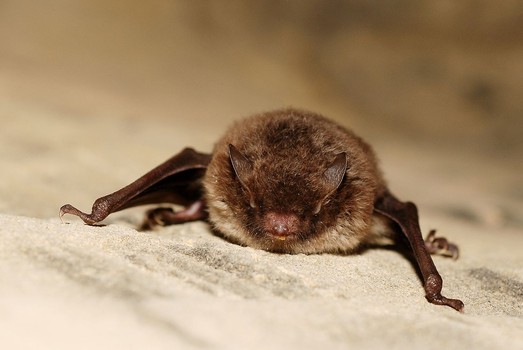Bats are for all intents and purposes blind. Bats locate prey, other bats, and stationary objects like tress and rocks with echolocation. Dr. Marc Holderied and colleagues from the University of Bristol have discovered why groups of bats do not run into each other when hunting or flying in the same location.
The researchers studied pairs of Daubenton’s bats (Myotis daubentonii) foraging low over water for stranded insects in Somerset, England and extrapolated their findings to all bats that echolocate. The bats follow the leader to avoid colliding with other bats. The echolocation speed is about 500 milliseconds. The speed of echolocation in the bats accounts for the ability of bats to fly blind and connect with prey while avoiding collisions with other bats. The leader role is not exclusive to any particular bat.
The bat “rules of the road” include picking up the beat of another bats wings and copying that pattern within four to five wing beats. The behavior is thought to produce an advantage in hunting in that potential prey may be able to see only one bat. Echolocation also allows the bats to slow down when their partner slows down so there are no rear end collisions.
The discovery has practical implications for humans. Search and rescue can be enhanced using the same patterns that bats use. Drone surveillance tactics can be optimized beyond present standards by doing what bats do. Amazon’s drone delivery system might avoid drone wrecks by adopting bat tactics.















